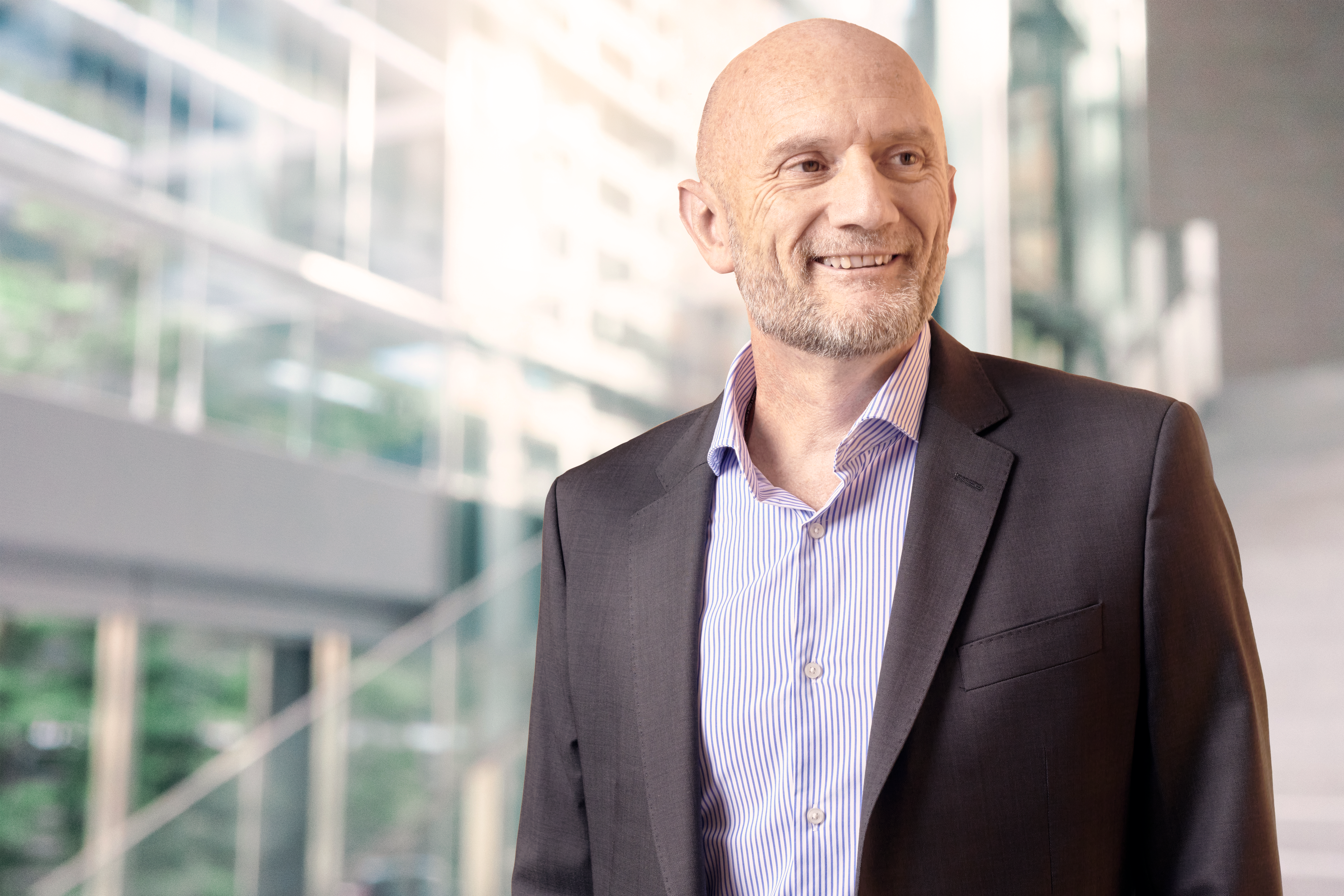- Client Stories
- Favorable Results in Unfavorable Conditions
- IQ Insigniam Quarterly® Magazine
- Organizational Culture
Heron Therapeutics’ Unified Culture
Heron Therapeutics has always been driven by outcomes. The San Diego-based pharmaceutical company’s first two drugs, Sustol and Cinvanti—approved by the U.S. Food and Drug Administration (FDA) in 2016 and 2017, respectively—help to prevent nausea and vomiting in patients undergoing chemotherapy.
“That’s really important to get people to continue with life-saving chemotherapy regimens,” says Kimberly Manhard, Heron’s executive vice president of drug development.
For its third drug, dubbed HTX-011, Heron’s ambitions were just as high. Clinical studies of HTX-011 demonstrated that with a single dose administered during surgery, the investigational new drug helps manage pain for the first three days after surgery—often the most painful period. By contrast, available pain medications typically given during surgery last just 12 to 24 hours.
“We all had to be more open and transparent with our communications.”
—Kimberly Manhard, executive vice president of drug development, Heron
But HTX-011 might have another, even greater benefit. The studies also showed that it can reduce, or even replace, the need for opioids—the addiction-forming drugs commonly prescribed post-surgery.
By curbing opportunities for dependency and abuse, the drug could help stem the U.S. opioid crisis if approved by the FDA. If it prevents just 1% of the 47,000 annual prescription opioid overdose deaths in the U.S. each year, the drug could save a life every day on average.
“By reducing the opioid pills in the community, this drug has the potential to impact not only patients and their caregivers but society at large,” Ms. Manhard says.
Given the potential benefits, Heron wanted to submit its new drug application (NDA) to the FDA as quickly as possible. Typically, it takes about six months from the time a pharmaceutical company obtains data from its last drug trial until it submits its NDA.
Heron set out to do it in half that time. The company aimed to get final data in mid-2018 and submit the NDA in October of that year. Doing so would not just mean working harder—it would require Heron to undertake a cultural transformation.
A Tale of Two Teams
To understand why this shortened timeline posed such a tremendous challenge, you first have to understand Heron’s cultural issues. Until late 2016, R&D at Heron was spread between two locations: Redwood City, California, where the company started, and its San Diego headquarters.
“Having two facilities did not lead to the best communication and therefore not the best teamwork,” Ms. Manhard says. The teams had distinct cultures—and paces. Frustration and blame were common. So Heron decided to consolidate all R&D employees into a new San Diego facility by mid-2017.
But a single building would be no panacea. The company needed to reinvent its culture from the ground up. “We were two organizations that didn’t have a shared culture,” Ms. Manhard says.
In late 2017, Heron ramped up its focus on reaching two broad and bold goals, Ms. Manhard says: “improving our working relationships and achieving the breakthrough goal of filing the NDA within a year.”
It would not be easy. “We had to see one another’s positive intent and deal with facts rather than interpretations,” says Sean Ristine, vice president of human resources at Heron. “If we assume that most of the time everyone has positive intent, we can resolve conflicts more productively and effectively.”
The company held work sessions to identify examples of when employees drifted across the line from reality to bias or conjecture, and discussed ways to overcome the strain this puts on work relationships.
One example came from an employee who suggested that others did not work as hard. That triggered an open discussion about facts regarding various department workloads, resource planning and ideas for better interdepartmental communication.
“Heron leadership invested the time to infuse a mindset of breakthrough performance and supported team members in thinking newly to rapidly resolve breakdowns that would normally paralyze a team,” says Jennifer Zimmer, a partner at Insigniam. “They separated the objective facts from the interpretations, stories, opinions and mythology. This helped the team take action that generated breakthrough—not business-as-usual—results.”
“We were two organizations that didn’t have a shared culture.”
—Kimberly Manhard
The process illuminated a core part of the problem: poor communication. Not everyone got the information they needed when they needed it. And employees felt they did not always understand the rationale behind executive decisions. The entire organization needed to change its ways.
“We all had to be more open and transparent with our communications and share information we had as soon as we had it, because it could impact other functions—whether we realized it or not,” Ms. Manhard says.
A Better Way Forward
The bottom line was this: Heron had to unlearn old habits and form better ones.
As the organization worked on the NDA of its new pain drug, employees realized they had to deliver the right information at the right times. “Timelines were extremely tight, and there were a lot of dependencies,” Ms. Manhard says. “But people had been in the habit of saying, ‘I can get that to you next week.’” To meet Heron’s aggressive NDA timeline, the vague promise of “next week” would not suffice.
So Heron employees learned a new way of communicating, embracing a common terminology of “making requests” and “honoring commitments.” They realized they all must start with respectful requests, and they all had to commit to fulfilling requests by a specific date and time, down to the time zone.
If they could not, they had to offer a counterproposal. “We learned that we benefit from making effective commitments to each other and from holding each other accountable to those commitments,” Mr. Ristine says.
“We no longer had to worry about people feeling offended or put on the spot when someone said, ‘I need to know exactly what time you’ll have this,’” Ms. Manhard says. “Now everyone realized we’re all in this together, and we all have a common goal.”
Employees also learned to stop keeping information and questions to themselves. “We encouraged people to ask questions, to say if they don’t understand why something is happening,” Mr. Ristine says. “We wanted them to stop withholding opinions from colleagues and instead ask for clarification.”
The work came down to much more than emails or reminders. Leaders engaged in training. Many employees took one-on-one coaching sessions to help them apply the new principles to their everyday work lives. “The coaching was phenomenally helpful,” Ms. Manhard says.
There was a structural issue that needed to be addressed as well: decision rights. Heron’s leaders had outgrown their ad hoc decision-making system. Whenever an issue arose in the past, usually a meeting was scheduled to simply hash out the problem.
That dynamic worked for a company with a dozen or so employees but became problematic as Heron grew. From 2015 to early 2019, Heron went from 75 to 210 employees. “We had too many people with too many opinions in too many meetings,” Mr. Ristine says.
Now the executive team is in charge of making the strategic decisions while various product and process teams, like the clinical development team, are in charge of decisions about execution. “You don’t always need everybody involved in every decision,” Mr. Ristine says.
Principles in Practice
By early 2018, Heron had embedded these new principles into daily practice as it raced toward the NDA deadline. And then the company hit turbulence, putting its newfound culture to the test.
Typically, a drugmaker acquires all of the data about a medication seeking FDA approval at least two months prior to the NDA; it then spends those final months writing various required summaries of the data. Yet in mid-October, just two weeks before its NDA filing deadline, Heron was still getting new data from one of its manufacturers.
“That late information really put our submission at risk,” Ms. Manhard says.
But Heron’s newly cohesive, collaborative team quickly identified the summary documents it could finish without that data and the documents it needed to keep open until the data was received.
As the NDA deadline neared, Ms. Manhard and Heron CEO Barry Quart realized that even more communication would be needed to meet the timeline. Both executives held daily office hours to address new issues quickly and decisively. At 4:30 p.m., Ms. Manhard and Dr. Quart opened their doors to the entire company, tackling 10-minute questions or hourlong problems. There was only one rule: If employees wanted to complain, they also had to propose a solution.
“That was very effective as we neared the end, when there was something that had to be addressed quickly every day,” Ms. Manhard says.
Agile approaches like this helped Heron successfully meet the October 2018 NDA filing goal. Now the company plans to extend the ways of working learned by its R&D team to the rest of the organization. That will be especially critical as Heron grows its sales and marketing teams, taking the company from its current 210 employees to 350 by the end of this year.
“We want to create one culture and one vision for the entire company,” Ms. Manhard says.
That unified approach will help the organization weave its core cultural values—such as advocating for patients’ needs, being results-driven, communicating transparently and working respectfully—into the fabric of its everyday work.
As Heron has seen, achieving a cohesive culture takes a massive organizational commitment. “So many companies put up a poster about their core values on a wall and maybe have a one-hour new-hire orientation about values and culture,” Mr. Ristine says. “But getting people to buy in to them and change how they work takes a lot of effort.” Upfront effort, Heron found, more than pays off in the end.
“Employees are incredibly inspired by the possibility of HTX-011 and passionate about helping patients and reducing opioid addiction,” Ms. Zimmer says. “One employee said, ‘I feel a sense of responsibility to get this drug to market as soon as possible. Patients are waiting.’”
This article appeared in the Summer 2019 issue of Insigniam Quarterly, with the headline “One Culture Delivers a Breakthrough.” To begin receiving IQ, go here.



